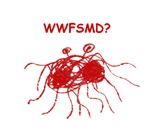Highest Court, indeed
The late Chief Justice William Rehnquist’s Senate confirmation battles in 1971 and 1986 were more intense and political than previously known, according to a newly released FBI file that also offers dramatic new details about Rehnquist’s 1981 hospitalization and dependence on a painkiller.
The FBI file on Rehnquist, released last week under the Freedom of Information Act, reveals that in 1971, as Rehnquist’s confirmation hearings for associate justice approached, the Nixon Justice Department asked the FBI to run a criminal background check on at least two potential witnesses who were expected to testify against Rehnquist. Then-FBI Director J. Edgar Hoover approved the request.
In July 1986, when President Ronald Reagan nominated Rehnquist to be chief justice, the Justice Department asked the FBI to interview witnesses who were preparing to testify that Rehnquist had intimidated minority voters as a Republican Party official in Arizona in the early 1960s. According to a memo in the Rehnquist file, an unnamed FBI official cautioned that the department “should be sensitive to the possibility that Democrats could charge the Republicans of misusing the FBI and intimidating the Democrats’ witnesses.” But then-Assistant Attorney General John Bolton — who more recently served as ambassador to the United Nations — signed off on the request and said he would “accept responsibility should concerns be raised about the role of the FBI.” It is unclear whether the FBI ever interviewed the witnesses.
Also in 1986, the FBI conducted an intensive investigation into Rehnquist’s dependence on Placidyl, a strong painkiller that he had taken since the early 1970s for insomnia and back pain. Rehnquist’s bout with drug dependence had been made public in 1981, when he was hospitalized for his back pain and suffered withdrawal symptoms when he stopped taking the drug.
The FBI’s 1986 report on Rehnquist’s drug dependence was not released at the time of his confirmation, though some Democratic senators wanted it made public. But it is in Rehnquist’s now-public file, and it contains new details about his behavior during his weeklong hospital stay in December 1981. One physician whose name is blocked out told the FBI that Rehnquist expressed “bizarre ideas and outrageous thoughts. He imagined, for example, that there was a CIA plot against him.”
The doctor said Rehnquist “had also gone to the lobby in his pajamas in order to try to escape.” The doctor said Rehnquist’s delirium was consistent with him suddenly stopping his apparent daily dose of 1400 milligrams of the drug — nearly three times higher than the 500-milligram maximum recommended by physicians. The doctor said, “Any physician who prescribed it was practicing very bad medicine, bordering on malpractice.”
This all sounds about right for a right-wing darling eulogized by the Preznit thusly:
On the bench and as a leader of the federal courts, Chief Justice Rehnquist was always a calm and steady presence. In his thinking and in his bearing, he personified the ideal of fairness, and people could sense it. Inside the Court, no man could have been a finer steward of the institution, its customs, and its history.
Some of the revelations discussed on this article are genuinely new. But there was plenty that was already known. A few years back I read John Dean's "The Rehnquist Choice", and there was plenty there to disgust. The parallels between the Nixon and Bush administrations are striking.
I wonder how psychopharmacology would explain Justice Scalia...




1 Comments:
Drugs can't explain psychosis and drugs can't cure it. They're not even very good at controlling it. The true parallel betwen Nixon et al. and Bush et al. is the number of truly psychotic people in positions of high power. That is 'psychotic' as in a by the book (DSM) diagnosis. The problem of course being that it is dangerous to denounce a crazy person. They could and likely would do something crazy in response.
TA
Post a Comment
<< Home